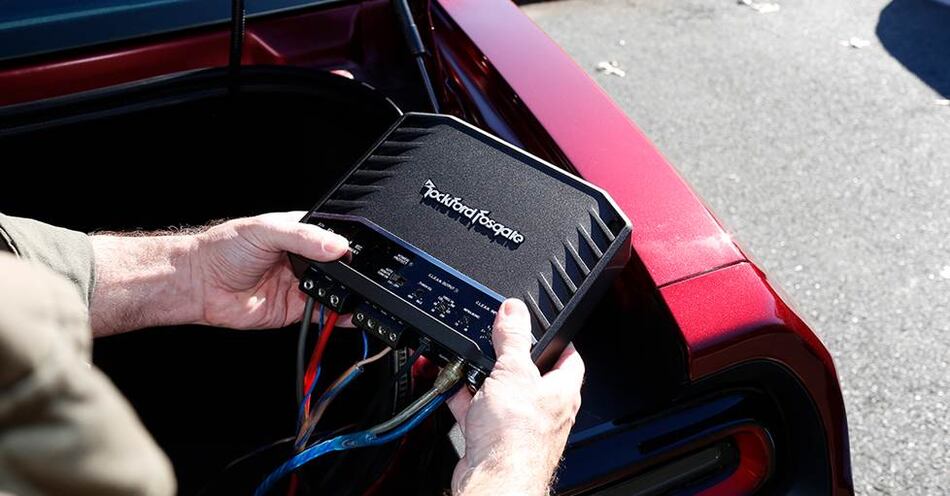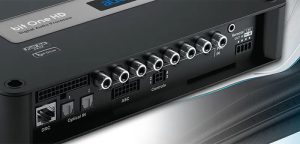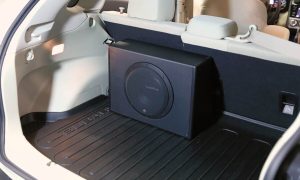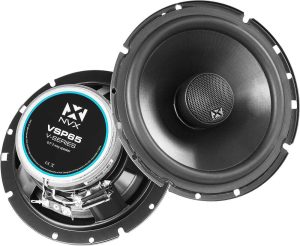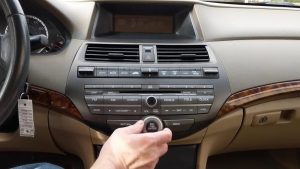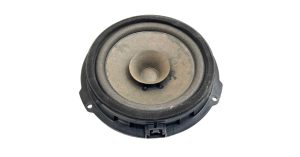Selecting the right car amplifier can transform your driving experience, delivering crisp, powerful sound that makes every journey feel like a concert. But with so many options, how do you know what size car amp you need? This guide breaks it down, offering practical advice to help you choose an amplifier that matches your car audio system, preferences, and budget. Let’s dive into the key factors, from power ratings to speaker compatibility, to ensure you get the perfect amp for your ride.
Contents
- Why Does Amplifier Size Matter?
- Understand Your Audio Goals
- Key Factors to Determine the Right Amp Size
- Types of Car Amplifiers
- How to Calculate the Right Wattage
- Common Mistakes to Avoid
- Budget Considerations
- Matching Your Amp to Your Car Audio System
- Installation Tips for Optimal Performance
- Real-World Example: Building a Balanced System
- Final Thoughts on Choosing the Right Car Amp Size
Why Does Amplifier Size Matter?
The size of your car amplifier directly impacts the quality and volume of your audio system. A properly sized amp boosts your speakers’ performance, delivering clear sound at any volume. Choose an amp that’s too small, and your music will lack punch, sounding flat or distorted. Pick one that’s too powerful, and you risk damaging your speakers or overloading your car’s electrical system. Striking the right balance ensures your audio setup performs at its best while staying reliable for years.
Amplifier size isn’t just about physical dimensions—it’s about power output, measured in watts, and how well it pairs with your speakers and car. By understanding your needs, you can avoid common pitfalls and build a system that sounds incredible.
Understand Your Audio Goals
Before shopping for an amp, clarify what you want from your car audio system. Are you chasing booming bass that rattles the windows? Or do you prefer crystal-clear vocals and balanced sound for all music genres? Your goals shape the type and size of amplifier you need.
For example, if you love bass-heavy music like hip-hop or EDM, you’ll likely need a mono or Class D amplifier designed for subwoofers. These amps deliver high power to drive low frequencies. On the other hand, if you enjoy rock or classical music, a multi-channel amp for full-range speakers might suit you better, providing clean power across mids and highs. Defining your priorities helps narrow down your options.
Also, consider how loud you want your system. If you’re aiming for concert-level volume, you’ll need a higher-wattage amp. For casual listening, a modest amp will do the job without overcomplicating your setup.
Key Factors to Determine the Right Amp Size
Choosing the right amplifier involves balancing several factors. Let’s explore the most important ones to guide your decision.
1. Speaker Power Requirements (RMS and Peak Power)
Your speakers’ power ratings are the starting point for picking an amp. Every speaker has two key specs: RMS (Root Mean Square) and peak power. RMS indicates the continuous power a speaker can handle, while peak power shows the maximum it can take for short bursts.
To avoid damaging your speakers, match the amp’s RMS output to the speaker’s RMS rating. For instance, if your speakers are rated at 50 watts RMS, choose an amp that delivers around 50-75 watts RMS per channel. This ensures your speakers get enough power without being overdriven.
Don’t focus too much on peak power—it’s less relevant for everyday use. Instead, prioritize RMS for a reliable, distortion-free match. Check your speaker manual or specs online to find these numbers before shopping.
2. Number of Channels
Amplifiers come in different channel configurations, from mono (one channel) to multi-channel (two, four, or more). The number of channels you need depends on your audio setup.
- Mono amps: Perfect for powering a single subwoofer, delivering focused power for deep bass.
- 2-channel amps: Ideal for running a pair of speakers, like front door speakers or a small subwoofer.
- 4-channel amps: Great for powering four speakers (e.g., front and rear) or two speakers plus a subwoofer with bridging.
- 5- or 6-channel amps: Designed for complex systems, powering multiple speakers and a subwoofer in one unit.
Count the components in your system to decide. If you’re only adding a subwoofer, a mono amp works. For a full setup with front, rear, and sub, a 4- or 5-channel amp simplifies things.
3. Impedance (Ohms)
Impedance, measured in ohms, affects how much power an amp delivers to your speakers. Most car speakers have an impedance of 2, 4, or 8 ohms. Your amp must be compatible with your speakers’ impedance to perform efficiently.
Check your amp’s specs to see what impedance it supports. For example, an amp might deliver 100 watts per channel at 4 ohms but only 60 watts at 8 ohms. Mismatched impedance can lead to underpowered speakers or overheating amps. Always verify that your amp and speakers align on this spec for optimal performance.
4. Car’s Electrical System
Your car’s electrical system plays a big role in amp selection. Powerful amps draw significant current, which can strain your alternator and battery. If you’re installing a high-wattage amp (e.g., over 500 watts RMS), you may need upgrades like a high-output alternator, a second battery, or a capacitor to stabilize power delivery.
To estimate your amp’s electrical demands, divide its total RMS wattage by your car’s voltage (typically 12-14.4 volts). For example, a 600-watt amp might draw around 50 amps of current. Check your car’s alternator output (usually 80-150 amps) to ensure it can handle the extra load. If you’re unsure, consult a professional installer to avoid electrical issues.
5. Physical Size and Installation Space
While power is critical, don’t overlook the amp’s physical size. Measure the space in your car where you plan to install it—under a seat, in the trunk, or behind a panel. Compact cars may require slim or low-profile amps, while larger vehicles can accommodate bigger units.
Also, ensure proper ventilation. Amps generate heat, and cramped spaces can cause overheating, reducing performance or lifespan. Leave a few inches of clearance around the amp for airflow.
Types of Car Amplifiers
Different amp classes suit different needs. Here’s a quick look at the main types:
- Class A/B: Known for clean, high-quality sound, these amps work well for full-range speakers. They’re less efficient, generating more heat, but deliver excellent audio clarity.
- Class D: Highly efficient and compact, Class D amps are ideal for subwoofers or space-constrained setups. They run cooler and draw less power, making them popular for modern systems.
- Class AB/D Hybrids: These combine the clarity of Class A/B with the efficiency of Class D, offering versatility for mixed setups.
Choose based on your priorities—sound quality, efficiency, or space. For most car audio enthusiasts, Class D amps strike a great balance for subwoofers, while Class A/B shines for mids and highs.
How to Calculate the Right Wattage
To find the right wattage, follow these steps:
- Check speaker RMS ratings: Note the RMS power of each speaker or subwoofer in your system.
- Multiply by the number of components: If you have four speakers at 50 watts RMS each, you need an amp delivering around 200 watts RMS total (50 watts x 4).
- Add a buffer: Aim for an amp with 10-20% more power than your speakers’ RMS to avoid clipping or distortion. For the example above, a 220-240-watt RMS amp is ideal.
- Consider headroom: Extra power (headroom) allows your amp to handle dynamic music peaks without strain, improving sound quality.
For subwoofers, you might go slightly higher—up to 1.5 times the sub’s RMS—for punchy bass. Just ensure your electrical system can support the load.
Common Mistakes to Avoid
Steer clear of these pitfalls when choosing your amp:
- Buying based on peak power: Peak power numbers are often inflated and don’t reflect real-world performance. Focus on RMS ratings.
- Ignoring impedance: Mismatched impedance can reduce power output or damage components.
- Overlooking electrical limits: A powerful amp without electrical upgrades can cause dimming lights, battery drain, or alternator failure.
- Skipping professional help: If you’re new to car audio, a professional installer can save time and prevent costly mistakes.
Budget Considerations
Amplifiers range from $50 to over $1,000, depending on brand, power, and features. Set a budget based on your needs. Entry-level amps from brands like Pioneer or Kenwood offer solid performance for basic setups. For premium sound, brands like JL Audio or Alpine provide superior clarity and power, but at a higher cost.
Don’t forget installation costs. Wiring kits, fuses, and labor can add $100-$300 to your total. If you’re on a tight budget, start with a modest amp and upgrade later as funds allow.
Matching Your Amp to Your Car Audio System
Your amp should complement your entire audio system, including your head unit, speakers, and subwoofers. A high-quality head unit with strong preamp outputs (4-5 volts) ensures your amp gets a clean signal, reducing noise. If your head unit is underpowered, consider adding a line output converter to improve signal quality.
Also, think about future upgrades. If you plan to add more speakers or a second subwoofer, choose an amp with enough channels or bridging options to grow with your system.
Installation Tips for Optimal Performance
Proper installation maximizes your amp’s performance and longevity. Here are some tips:
- Secure the amp firmly: Vibrations can loosen connections, so mount it to a stable surface.
- Use quality wiring: Cheap wires can cause power loss or interference. Invest in a good wiring kit with proper gauge cables.
- Ground properly: A solid ground connection prevents noise and ensures stable power delivery.
- Tune the amp: Adjust gain, crossover, and bass boost settings to match your speakers and avoid distortion.
If you’re not confident in your skills, hire a professional. A poorly installed amp can sound bad or fail prematurely.
Real-World Example: Building a Balanced System
Imagine you’re upgrading a sedan’s audio system with two 50-watt RMS door speakers and a 300-watt RMS subwoofer. You want clear mids and deep bass for daily commutes. Here’s how to choose the amp:
- For the door speakers, a 2-channel amp delivering 50-75 watts RMS per channel at 4 ohms works well.
- For the subwoofer, a mono Class D amp rated at 300-400 watts RMS at the sub’s impedance (e.g., 2 ohms) ensures powerful bass.
- Alternatively, a 4-channel amp (50 watts RMS per channel for speakers, bridged to 300 watts RMS for the sub) could handle both.
Check your car’s alternator (e.g., 100 amps) to confirm it can support the amp’s draw. Install the amp under the rear seat with proper ventilation, and use a wiring kit rated for 600 watts to avoid bottlenecks.
Final Thoughts on Choosing the Right Car Amp Size
Picking the right car amplifier size boils down to understanding your speakers, audio goals, and car’s limitations. Match the amp’s RMS output to your speakers’ ratings, choose the right number of channels, and ensure your electrical system can handle the load. By focusing on these factors, you’ll build a system that delivers the sound you love without breaking the bank or your car.
Ready to shop? Check your speaker specs, measure your installation space, and set a budget. With the right amp, your car will become a rolling concert hall, making every drive a joy. Happy listening!
